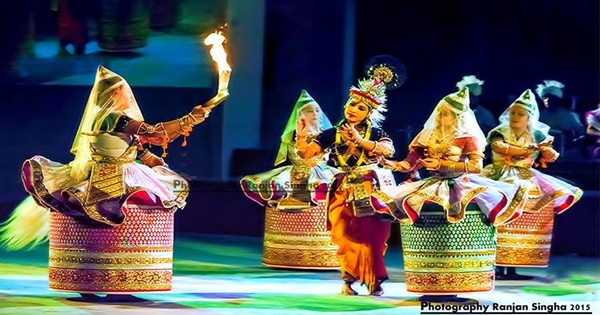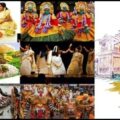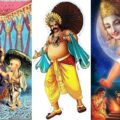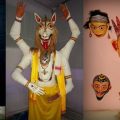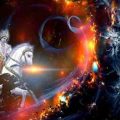Onam and Kummatti Kali: The Colorful Mask Dance of Kerala
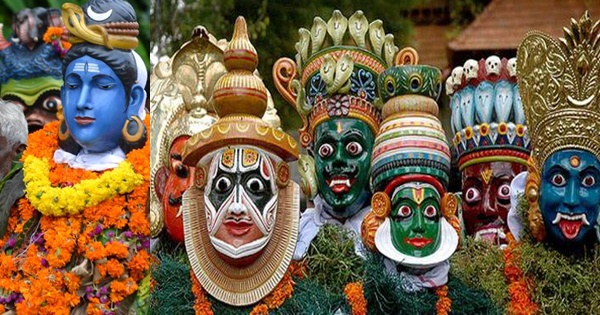
Onam! This festival that falls in the month of Chingam according to the Malayalam calendar and corresponding to August–September of the Gregorian datebook, marks the onset of the summer harvest. It is the New Year for Malayali Hindus. On the mythological and historical angle, Onam commemorates Mahabali, the grandson of Prahlad, whose father was killed by the Narasimha avatar of Lord Vishnu. The festival is also a celebration, revering Vaman avatar of Vishnu. Besides, Onam glorifies the Parashuram avatar of the Lord.
Numerous festivities are witnessed during Onam, which is celebrated for four days. Few of these worth mentioning are folk songs and dance called Atthachamayam, boat races known locally as Vallam Kali, tiger dances called Pulikali, flower arrangements, mask dance called Kummati Kali, performance of martial arts termed Onathallu, and the list goes on.
Kummatti Kali, also called Kummattikali is a famous colorful mask dance of Kerala. This dance is performed with great pomp and show across Kerala in general and Thrissur, Palakkad and parts of South Malabar in particular during Onam. The Kummattikali performers move from house to house, entertaining people in each household with their dance performances. In return, the householders give small gifts including jaggery, rice, or small amounts of cash. Wish to watch this ancient dance form of Kerala live in its pristine and original form? Visit Bhadrakali temple located in Palakkad district.
The costumes are the most interesting facet of Kummattikali. The performers don themselves with profoundly painted colorful wooden mask depicting faces of characters from the epics and scriptures of ancient India. The dancers, through their wooden masks, take thye form of Goddess Kali, Lord Shiv, Krishna, Narada, Kiratha, Darika, hunters, to name a few. These masks are usually made out of saprophyte, jack fruit tree, alstonia scholaris, hog plum tree, coral tree, etc.
The dancers wear skirts woven out of plaited grass. Few of them cover their whole body with bunches of grass for a more bushy appearance. The disguise of a toothless open mouth is given shape with the talla attached externally to the mask. Dancers also hold and manipulate long sticks of residual agricultural produce called ‘Kummattikali’. The name of this dance derives from this term. Their dance is related to Shaiva myth. Thamma (an old woman), who is symbolic of mother of every being and everything, walks in front with the help of a stick amid the performers.
Do you know the antiquity of Bharat’s Kerala dates back before 17500 BC? Following of the lunar cycle and calendar starting in Simha rashi corroborates this fact. There are numerous facts that prove this point, which I shall write about in my upcoming posts.
Visit Indian History Real Truth Facebook group to view related posts. This article is part of ‘JEWELS OF BHARATAM SERIES [TM]‘ by the author.
Disclaimer: The views expressed here are solely of the author. My India My Glory does not assume any responsibility for the validity or information shared in this article by the author.

